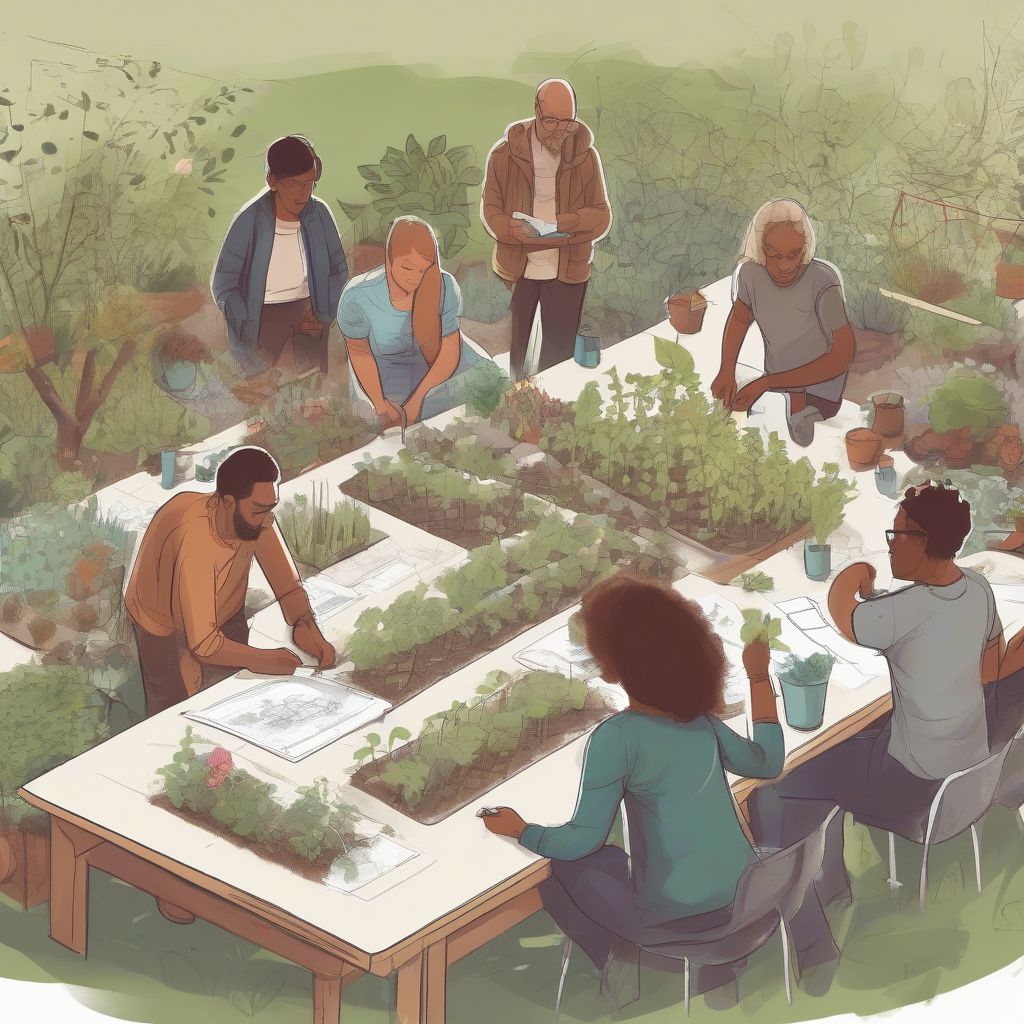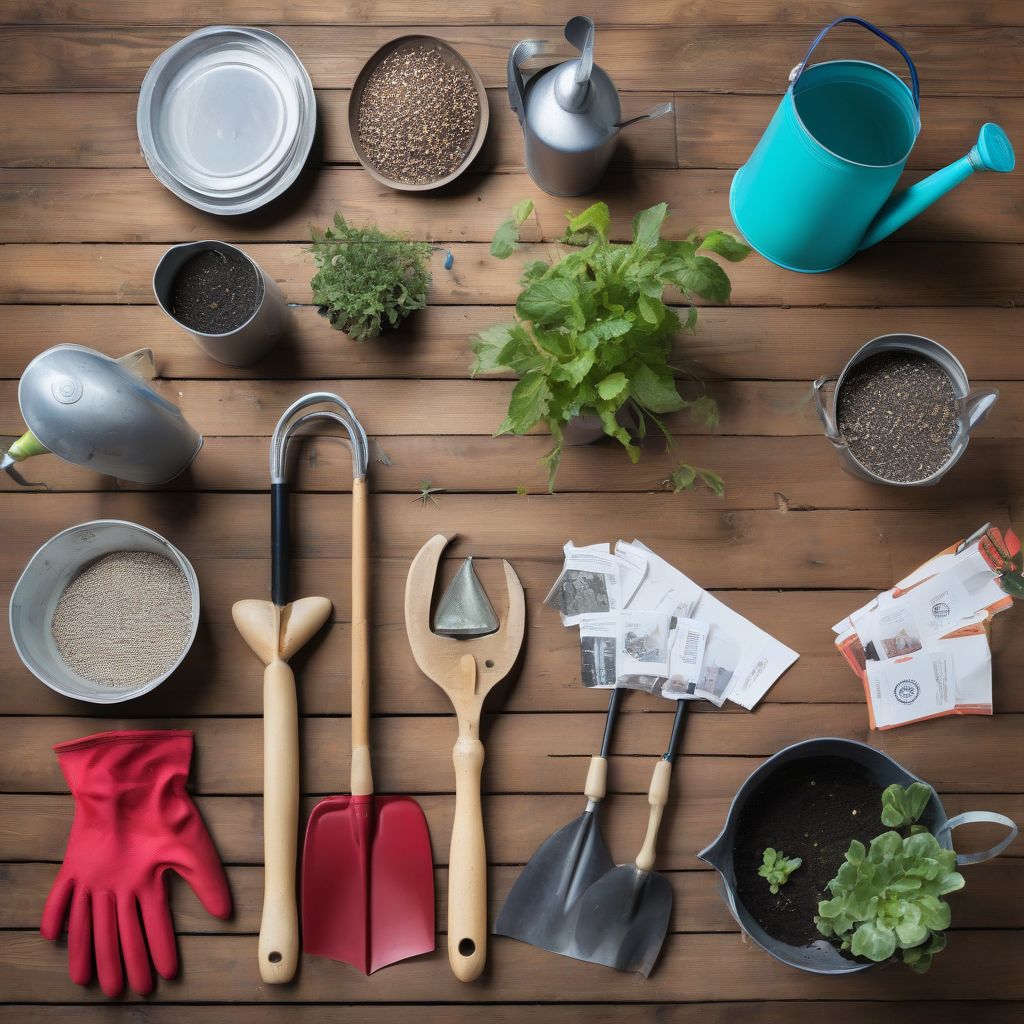Imagine a sunny afternoon, strolling through rows of lush vegetables, vibrant flowers blooming, and friendly faces exchanging tips and laughter. This is the magic of a thriving community garden – a shared space where people come together to grow fresh food, build relationships, and connect with nature. But how do you turn this dream into a reality?
Starting a community garden can be incredibly rewarding, but it requires careful planning and collaborative effort. Don’t worry, it’s not as daunting as it seems! Whether you’re a seasoned gardener or a complete novice, this guide will equip you with practical tips and expert advice to cultivate a thriving community garden. Let’s dig in!
1. Build a Strong Foundation: Planning and Organizing
A successful community garden begins with a solid plan. Just like nurturing a seedling, you need to create the right conditions for growth.
Assemble a Dedicated Team:
Gather a diverse group of passionate individuals who are excited about the project. “Bringing together people with different skills and experiences is key,” says Michael Pollan, author of “The Omnivore’s Dilemma.” “You’ll need organizers, gardeners, fundraisers, and people with a knack for outreach.”
Define Your Garden’s Purpose and Goals:
Are you primarily focused on providing fresh produce for the community, creating a peaceful green space, or promoting educational opportunities? Having a clear vision will guide your decisions throughout the process.
Choose the Perfect Location:
Consider factors like sunlight exposure (at least 6 hours daily is ideal), accessibility, water availability, and soil quality. Consult with local gardeners or agricultural extension services for soil testing and advice.
 Community Garden Planning
Community Garden Planning
2. Cultivating Community Involvement
A community garden thrives on the participation and enthusiasm of its members.
Spread the Word and Recruit Members:
Use flyers, social media, local newspapers, and community bulletin boards to reach potential gardeners. Host an informational meeting to outline the project and gauge interest.
Establish Clear Communication Channels:
Regular meetings, email updates, or a dedicated messaging group can keep everyone informed and engaged. Encourage open dialogue, feedback, and idea sharing.
Foster a Welcoming and Inclusive Atmosphere:
Create a space where everyone feels valued and respected, regardless of their gardening experience. Organize workshops, potlucks, or volunteer appreciation events to strengthen bonds.
3. Getting Your Hands Dirty: Practical Considerations
Develop a Garden Layout and Plot Allocation:
Decide on the size and type of plots (raised beds, in-ground, etc.) based on available space and community needs. Use a fair and transparent method for allocating plots, considering factors like accessibility and experience levels.
Gather Essential Tools and Resources:
Invest in basic gardening tools, hoses, watering cans, and storage solutions. Explore options like tool-sharing programs or partnerships with local businesses for discounts or donations.
Choose Your Crops Wisely:
Select a variety of vegetables, fruits, herbs, and flowers that are well-suited to your climate and growing conditions. Consider low-maintenance, high-yield options, especially for beginners.
 Community Gardening Supplies
Community Gardening Supplies
4. Sustainable Gardening Practices
Promoting environmental responsibility is crucial for a thriving community garden.
Embrace Organic Gardening Methods:
Encourage the use of natural fertilizers, compost, and pest control methods to minimize environmental impact and promote healthy soil.
Conserve Water Wisely:
Install water-efficient irrigation systems, collect rainwater, and mulch around plants to retain moisture and reduce water usage.
Composting and Waste Reduction:
Set up a designated composting area to recycle garden waste and kitchen scraps into nutrient-rich fertilizer. Minimize waste by using reusable containers and avoiding single-use plastics.
5. Nurturing Growth: Maintenance and Sustainability
Maintaining a community garden requires ongoing effort and shared responsibility.
Create a Garden Schedule and Assign Tasks:
Establish a rotating schedule for watering, weeding, harvesting, and other essential tasks. Clearly outline responsibilities and encourage members to share their skills and knowledge.
Celebrate Successes and Address Challenges Together:
Regularly acknowledge achievements, share gardening tips, and troubleshoot any issues as a group. Learning from both successes and setbacks fosters a sense of camaraderie and resilience.
Plan for Long-Term Sustainability:
Explore funding options like membership dues, grants, or fundraising events to cover ongoing expenses and ensure the garden’s longevity.
Conclusion
Creating a thriving community garden is a journey that requires passion, dedication, and a shared love for growing. By following these tips, you can cultivate a vibrant space that nourishes both body and soul. Remember, the true magic lies not just in the harvest but in the connections forged, the knowledge shared, and the sense of community that blossoms alongside the plants. So gather your neighbors, grab your gardening gloves, and let’s get growing!
What are some of your favorite things to grow in a community garden? Share your thoughts and experiences in the comments below!
[amazon bestseller=”community gardening”]
